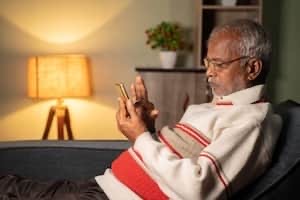WhatsApp and Professional CGM Used to Treat Diabetes in India
By Arvind Sommi
 India is a developing country where diabetes is highly prevalent. Leading endocrinologists shared how they use the messaging service WhatsApp and Professional CGMs to overcome barriers.
India is a developing country where diabetes is highly prevalent. Leading endocrinologists shared how they use the messaging service WhatsApp and Professional CGMs to overcome barriers.
There are roughly 74 million people living with diabetes in India. People living in India often face a greater financial burden of diabetes compared to people living in the United States since the average income is significantly lower ( roughly 16,000 Rupees or $209 monthly salary) and most healthcare expenses are paid out-of-pocket.
At the ATTD 2022 conference in Barcelona, Spain, a panel of leading endocrinologists in India shared some innovative solutions that they have implemented across the country.
WhatsApp & Diabetes Support Groups
WhatsApp is a popular messaging app with over 487 million users in India. Dr. Jothydev Kesavadev, chairman of Jothydev’s Diabetes Research Center in Kerala, India, presented his community health project that used WhatsApp to build free digital diabetes support groups for 950 people with type 1 diabetes.
Kesavadev created four WhatsApp groups for people with diabetes, each containing volunteer physicians, nurses, educators, and dieticians. Similar to how a hospital has on-call staff, “In each WhatsApp group,” he said, “one of us in the team always made sure we replied to the questions posted without any delay.”
Through this model, Kesavadev’s team has provided 24/7 advice to people with diabetes for no cost. The team has created and shared educational videos to help people learn about different aspects of type 1 diabetes. For example, nurses made videos on proper injection techniques that could be rewatched as needed.
While this service was able to improve access to care for many people in India with diabetes, Kesavadev also noted certain limitations. For example, many members of the group may feel uncomfortable posting their concerns in a large group chat, especially since diabetes is highly stigmatized in India. Additionally, he noted that none of the healthcare professionals were being financially compensated for their time, presenting a potential barrier to others hoping to initiate similar programs.
In addition to WhatsApp support groups, other Indian physicians have developed novel ways of using professional CGM.
Professional CGMs and Time in Range in India
Continuous glucose monitors (CGMs) allow people with diabetes to receive real-time data about their Time in Range (TIR). However, the cost of a CGM is prohibitively expensive for most people in India. The CGM reader is a one-time expense of 5,500 rupees (about $72) and each 14-day sensor is 5,000 rupees (about $65).
Dr. Mithun Bhartia, an endocrinologist at the Apollo Clinic in Guwahati, India, discussed how he navigates these financial barriers by using professional CGM (Pro CGM). Pro CGMs are provided by the provider’s healthcare clinic and after a period of use, all materials are returned.
“TIR may provide a more accurate assessment of glycemic stability and hypoglycemia,” Bhartia said. TIR is particularly important for people who have frequent lows and are unaware of them, he added. The cost barriers of personal CGM lead to intermittent use among some, which is not as valuable as consistent use.
Bhartia noted that Pro CGMs are a popular option that physicians use to identify problems, such as frequent hypoglycemia, and then work with the person with diabetes to develop a structured plan to self monitor their blood glucose. He said that although the costs of CGM technology are still too high to recommend each person in India wear one continuously, “the clinical utility of A1C is enhanced when used as a complement to Time in Range data.”
People with diabetes in India face unique challenges to the management of their condition. It is important for researchers to understand this and continue to find innovative solutions to address these barriers to accessing quality healthcare.








